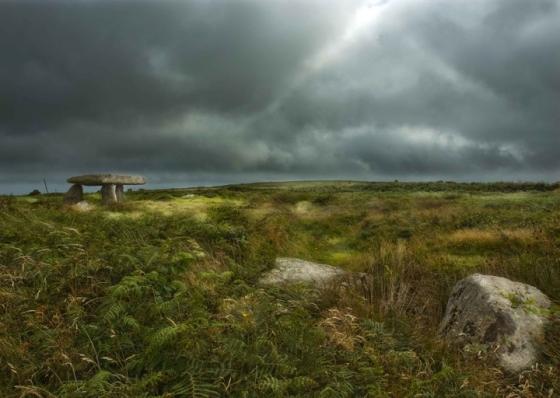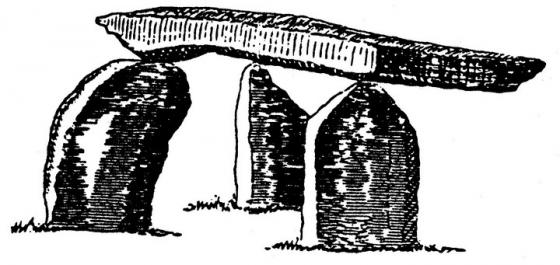Mr Hunt collected this for his ‘Popular Romances of the West of England’ (originally published 1865). He says: “the following, communicated to me on the 8th of August, is too good to be lost. I therefore give it in my correspondent’s own words:”
“I heard last week of three fairies having been seen in Zennor very recently. A man who lived at the foot of Trendreen hill, in the valley of Treridge, I think, was cutting furze on the hill. Near the middle of the day he saw one of the small people, not more than a foot long, stretched at full length and fast asleep, on a bank of griglans (heath)*, surrounded by high brakes of furze. The man took off his furze cuff, and slipped the little man into it, without his waking up; went down to the house; took the little fellow out of the cuff on the hearthstone, when he awakened, and seemed quite pleased and at home, beginning to play with the children, who were well pleased with the small body, and called him Bobby Griglans.
“The old people were very careful not to let Bob out of the house, or be seen by the neighbours, as he promised to show the man where the crocks of gold were buried on the hill. A few days after he was brought from the hill, all the neighbours came with their horses (according to custom) to bring home the winter’s reek of furze, which had to he brought down the hill in trusses on the backs of the horses. That Bob might be safe and out of sight, he and the children were shut up in the barn. Whilst the furzecarriers were in to dinner, the prisoners contrived to get out, to have a ‘courant’ round the furze-reek, when they saw a little man and woman, not much larger than Bob, searching into every hole and corner among the trusses that were dropped round the unfinished reek. The little woman was wringing her hands and crying, ‘O my dear and tender Skillywidden, wherever canst ah (thou) be gone to? shall I ever east eyes on thee again?’ ‘Go ‘e back,’ says Bob to the children; ‘my father and mother are come here too.’ He then cried out, ‘Here I am, mammy !’ By the time the words were out of his mouth, the little man and woman, with their precious Skillywidden, were nowhere to be seen, snd there has been no sight nor sign of them since. The children got a sound thrashing for letting Skillywidden escape.”
*Quite recently I heard, in St Agnes, heath-flowers called “the blowth of the griglans ?
Online at the sacred texts archive at
sacred-texts.com/neu/eng/prwe/index.htm
Perhaps the fairies lived in one of the cairns?
I see on the map ‘Skillywadden’ is the name of a nearby house (a barn where you can stay) – it’s on the 1880s map too.


























































































































































































